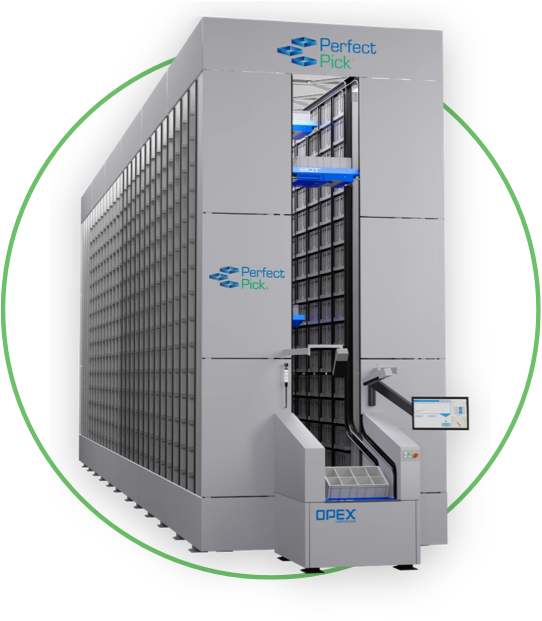Automation: Reaching All the Way Up
MHD Warehousing, July 2021
Demand for industrial and logistics space in Australia continues to grow. OPEX® automation solutions are making the most of warehouse space to increase supply chain efficiency.
Monty McVaugh, Manager of Product Management at OPEX, says that when it comes to automation, the COVID crisis has forced many businesses’ hands.
“It’s no longer a question of when they’ll implement these solutions but how,” Monty tells MHD. “If you don’t have automation, you’re left far behind. Many people are trying to figure it out.”
Monty and the team at OPEX are well placed to comment on the advent of automation in Australia, and how to best adapt. For decades, OPEX sold mail and scanning automation equipment to the Australian market, but entered the warehouse automation market in 2018 – at a time when Sydney was the sixth most expensive city for logistics space in the world.

The cost of real estate has only skyrocketed since then. With rising online consumer activity resulting in high property demand, Monty says it’s more important than ever to make the most of acquired space. Businesses want to uncover the most efficient way to store inventory. And the best way, Monty argues, is to look up.
Khurshed Mrza, Director – Warehouse Automation (APAC) for OPEX agrees that using the vertical space of a warehouse can benefit the bottom-line for business-to-business and business-to-consumer operations.
“Australia has been slow to adopt new technologies, but we have recently seen a surge of new adopters,” Khurshed says. “In this age of rising property prices, a critical competitive advantage for a business is optimally using the vertical space because traditional automation has spread horizontally across the footprint of the warehouse.”
Occupying less space allows OPEX’s customers to use smaller warehouses, be closer to consumers, and reduce the last mile cost of the fulfilment.
OPEX’s Perfect Pick® AS/RS system automates goods-to-person picking and stocking, and its iBOT® technology retrieves and stores goods at up to 1000 tote presentations per hour per aisle. A typical full aisle system can store more than 12,200 totes, each capable of carrying a 35Kg pay load.
“A lot of older systems have reached their full capacities. You can’t squeeze the lemon anymore, it’s dried out,” Monty says. “We have different sizes of totes and can configure our systems to precisely cater to the needs of our customers.”
The standalone system can be expanded by adding modules or more aisles. Additional iBOTs can be introduced or removed in minutes. A customer entering automation can buy a small system on the perfect picker, use the vertical space, and expand the picking capacity as the business grows.
OPEX’s Sure Sort® automated sorting system is a small item system that uses a robotic item sorter to handle variables and deliver parcels to their final location. Sure Sort can be scaled, sized and customised to the business environment.
Khurshed notes that downtime is one of the biggest enemies of supply chain efficiency. Even an hour of a packing system not working properly can result in thousands of dollars lost in a high velocity environment.
“The iBOTs can be easily replaced/removed within minutes, if there is a problem within the aisles – unlike many mini-load shuttle systems, where a single point failure causes the entire system to come to a standstill.”
Monty counsels caution when it comes to many autonomous mobile robots (AMR) that are entering the warehouse scene. Unlike the Sure Sort® and Perfect Picker, he notes, AMRs are still in their infancy – some not yet meeting regulatory compliance and safety standards. This causes businesses to have to limit the capabilities of the AMR to maintain safety, often by putting a fence or cage around it, eating up more real estate inside the warehouse. And space, he notes, is money.
Monty expects demand for automation in Australia to continue growing. As it does, he underscores the importance for businesses of choosing a vendor that offers holistic automation solutions: “A vendor that just provides hardware is only going to provide one piece of the puzzle. While those that can offer an integrated solution might seem more expensive on paper – they’re actually cheaper in the long run.”
This article originally appeared in the 2021 July issue of MHD Warehousing.




